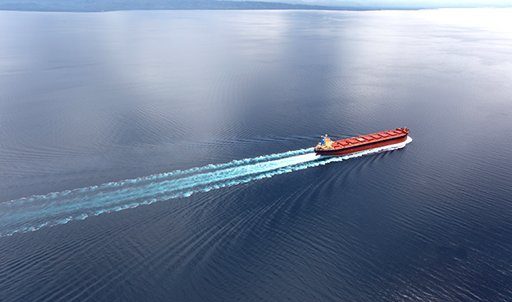Research questions the validity of slow steaming’s green claims

Three shipping professors have revisited the science behind slow steaming and are questioning the validity of the green claims championed by many owners and politicians such as Emmanuel Macron.
Roar Adland, Pierre Cariou and Francois-Charles Wolff have a new paper out entitled ‘Optimal ship speed and the cubic law revisited: Empirical evidence from an oil tanker fleet’ in which they have taken the speed-consumption relationship using vessel performance data for a fleet of 16 aframax and suezmax tankers.
The authors developed a flexible framework for the estimation of the fuel consumption-speed curve for ships which allows for speed-dependent elasticity. Using a large dataset of noon reports for 16 tankers, the study has estimated the corresponding elasticities net of weather effects. The empirical findings suggest the classical cubic law for fuel consumption is valid only near the design speed but also that the sensitivity with regards to sailing speed can be substantially lower at the sailing speeds actually observed. The cubic law is the exponential – roughly cubic – relationship between speed and fuel consumption, something that has been largely accepted as conventional wisdom since at least 1980.
“Our results can be used to question the economic and environmental benefits of slow-steaming and fuel levies,” the study states, while adding the caveats that this was based only on tankers and for other ship types such as containerships the argument might not be so watertight.
Philippe Louis-Dreyfus, shipping’s original champion of slow-steaming legislation, managed last year to get the French president Macron to support the campaign to legislate for slower speeds along with the backing of more than 120 shipowners. The issue ought to have been discussed at the International Maritime Organization’s Marine Environmental Protection Committee (MEPC) in March, but the meeting was cancelled due to coronavirus.
In a provocative post on LinkedIn, Adland, from the Norwegian School of Economics, wrote: “What if policies that require further mandatory slow steaming will have little or no environmental effect?”
Adland explained that an often overlooked problem is that ships’ hulls and propulsion systems are still designed for relatively high vessel speeds – 15 knots for a bulker or tanker. However, in reality, ships these days sail at a fraction of their design speed – typically around 10 to 12 knots. This slow-steaming is often hailed as the most efficient way to reduce emissions due to the related cubic law.
The study has found that cubic law holds only near design speed, with a sharp reduction in the effect of speed reduction at prevailing speeds, decreasing further at very low speeds. Worst case, the tankers studied will likely end up with a negative environmental impact of deep speed reductions if weather effects are accounted for.
“Is it time to take speed limits off the table as a serious environmental policy option?” Adland mused in a post that has sparked considerable volumes of comments.
Guy Platten, secretary general of the International Chamber of Shipping (ICS), was among a number of senior executives against slow steaming when interviewed by Splash last year.
“Simply introducing a mandatory speed limit can have negative impacts on the efficiency of an engine, in the worst cases resulting in increasing emissions,” Platten said.
The IMO will hold an “informal virtual meeting” to exchange views on greenhouse gas reduction from shipping on July 6 as it waits for the pandemic to recede and for formal meetings such as MEPC to get started again.
